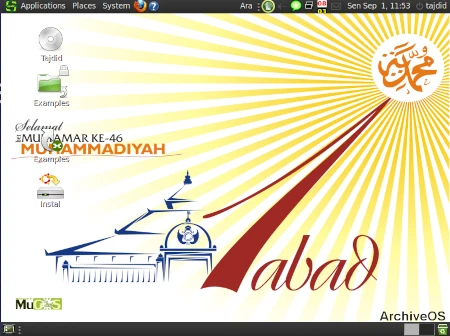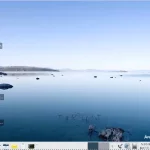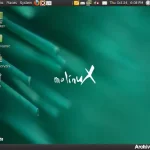Web site: tajdidlinux.wordpress.com
Origin: Indonesia
Category: Desktop
Desktop environment: GNOME
Architecture: x86
Based on: Ubuntu
Wikipedia:
Media: Live DVD
The last version | Released: 1.0 | July 3, 2010
Tajdid – a Linux distribution developed by POSS UMS and the Muhammadiyah Student Association (IMM) to create an Indonesian Islamic Linux distribution tailored to the needs of general computer users in Indonesia.
Featuring the philosophy of simplicity, reliability, and the distro’s slogan of Islamic study and da’wah, Tajdid Linux was developed openly and collaboratively to create a uniquely Indonesian Islamic Linux distribution, specifically for the world of education.
Pudingmu is a digital library application containing a collection of books, papers, articles, journals, organizational guidelines, decrees and statements, various guidelines and tarjih results, and various matters relating to Muhammadiyah in particular and Islam in general. The Pudingmu used here is a very simple initial version. However, in the future, a library system will be developed that can simulate a real library. It includes collection management and search features, and can synchronize with a central server for automatic collection updates.
Meanwhile, the “verses of the universe” bookmark is a collection of Kauniyah verses compiled by Dr. Agus Purwanto. This bookmark is then integrated with the most popular digital Quran recitation application for Linux, Zekr. Selecting a specific index will immediately open the verse in question and allow it to be recited by Qari Misyari Al-Afasy (Kuwait).
In addition to these two applications, there are numerous other educational and Islamic applications, applications for simulating telescopes, globes, and the inclusion of the popular office application, OpenOffice.org. All of these applications are immediately available and freely available.
Tajdid is an operating system that can be run directly from a CD or installed onto a computer. Furthermore, Tajdid can be run as a standalone operating system or on top of another operating system (e.g., Windows, Linux, Mac) using virtualization software.





